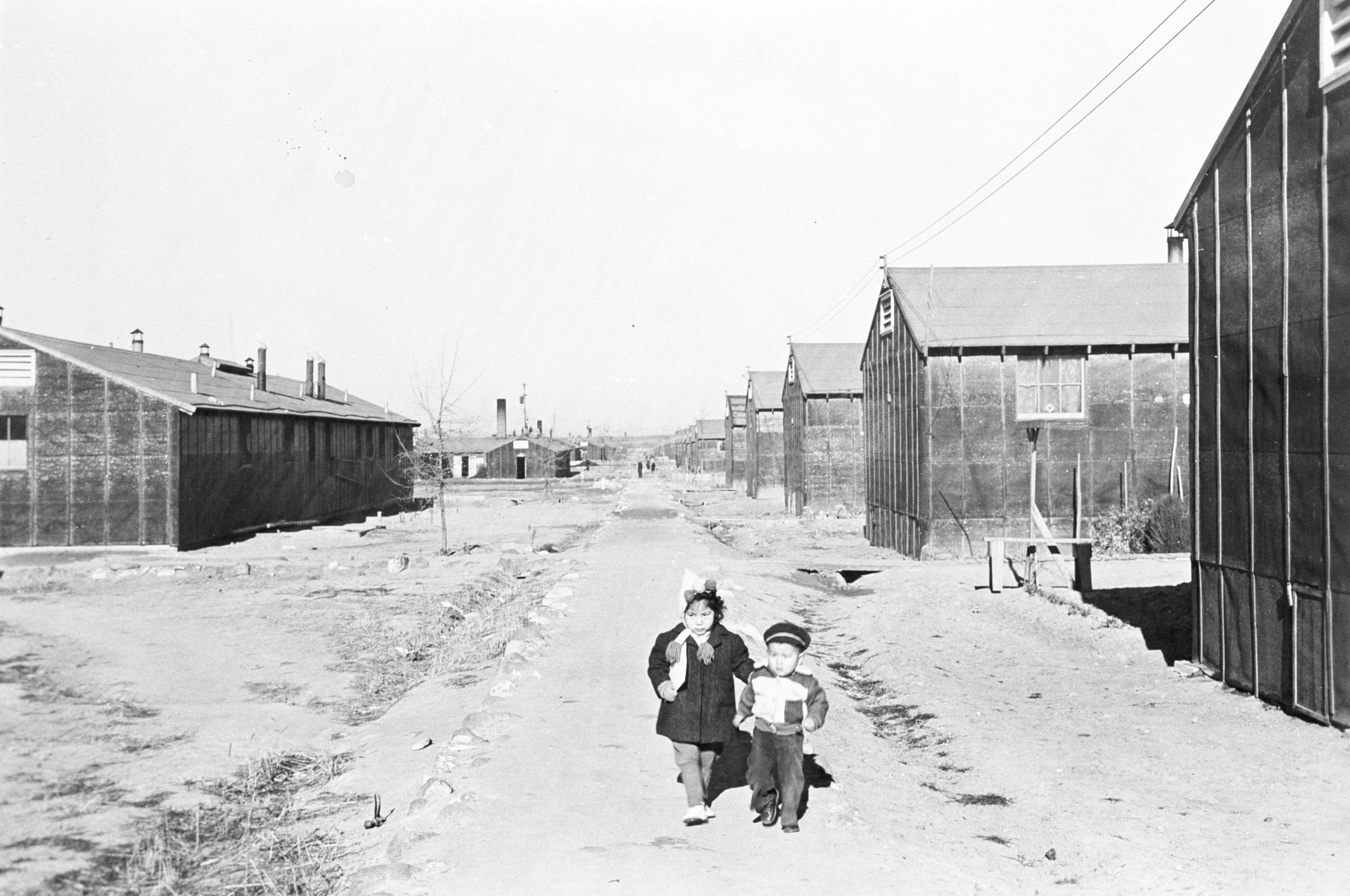PRESS KIT
Minidoka National Historic Site Named One of America’s 11 Most Endangered Historic Places by the National Trust for Historic Preservation
Massive Proposed Wind Farm threatens Minidoka National Historic Site
PRESS RELEASE
The National Trust for Historic Preservation has named Minidoka National Historic Site, a unit of the National Park Service, as one of the 11 Most Endangered Historic Places in America.
Minidoka National Historic Site is threatened by a proposal to build one of America’s largest wind farms on public land with 400 wind turbines on Minidoka’s historic footprint and within 2 miles of the Visitor Center. This is the second time that Minidoka National Historic Site has been named to the 11 Most Endangered list.
Logos
Videos
Photos
Minidoka Barracks with Woman and Child. Displays the living condition of those incarcerated at Minidoka.
Courtesy of the National Archives and Records Administration. August 1943.
Minidoka under construction. Displays the solitude and expansive vistas of Minidoka.
Courtesy of the National Archives, photo no. NARA ID: 210-G-11D-105. August 18, 1942
Issei Memorial & Exhibit at Minidoka Visitors Center lists the names of first-generation Japanese Americans incarcerated at Minidoka. The Chinese Exclusion Act barred Issei from naturalization until the 1950s because of their race.
National Park Service/Byron Folwell. 2019.
Historic Block 22 Barrack and Mess Hall. Minidoka had 44 blocks. Each block contained 12 barracks, mess hall, latrine and recreation center. 6 families lived in a barrack (one family per room).
National Park Service/Stan Honda. 2018.
National Park Ranger and Survivor at opening of Visitors Center. Fewer and fewer survivors are living today to tell the story of incarceration, thus the importance of places like Minidoka National Historic Site to preserve this history.
National Park Servic/Byron Folwell. February 2022.
Replica Guard Tower next to the historic stone guard house at the entrance of Minidoka. Blue open skies provide the sense of isolation that incarcerees experience.
National Park Service/Stan Honda. 2018.
Historic barrack at night. Idaho is known for its Dark Skies Preserve. 400 wind turbines at 740 feet high with lights will endanger the feeling and association of the site.
National Park Service/Stan Honda. 2018.
Girl Scout Troop at Minidoka displays the irony of the troop standing in front of the American flag and participating in an American youth group.
Courtesy of National Archives, photo no. NARA ID: 210-CMB-SP2-1874. 1942-1945.
Military Honor Roll was erected by incarcerees. It lists the names of Japanese Americans serving in the military while their families were incarcerated at Minidoka. A replica now stands in the same location.
Courtesy of the Mitsuoka Family Collection. 1944.
Survivor at Honor Roll listing Nisei Soldiers at Minidoka National Historic Site during Pilgrimage.
Ryan Kozu/Minidoka Pilgrimage Planning Committee. 2014.
Two children in camp, Minidoka concentration camp, Idaho.
Wing Luke Asian Museum, the Hatate Collection (Number 1992-41-4 R). 1943.
Memorial service at Minidoka for a Nisei soldier killed in action in the Rome-Arno Campaign.
Courtesy of the Seattle Nisei Veterans Committee. 1944-1945.
Farm on the outskirts of the Minidoka internment camp. All women are working on the farm. Shows the flat open expanse of the terrain.
Courtesy of the Wing Luke Asian Museum, the Hatate Collection. 1940s.
(Original Caption): “Fumi Onodera, 20, proudly points at the names of her 3 brothers, Kid, 26; Kaun, 24; and Satoru, 22, on the Honor Roll of Japanese-Americans serving in the U. S. Army from the Minidoka Relocation Center, Hunt, Idaho.”
Courtesy of the National Archives and Records Administration.
















